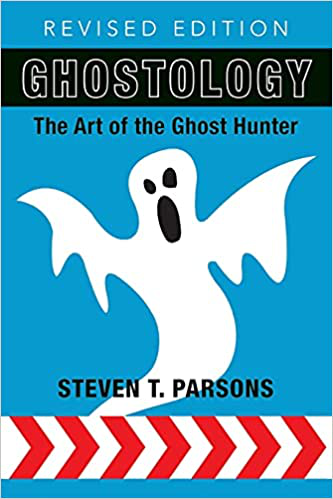Máire Rua (Red Mary) of Leamaneh Castle, County Clare, Ireland
Mythology/Folklore/History
Tuesday 18th, June 2024
4 minute read.
Irish history is rich with tales of formidable figures, but few can rival the ferocity and mystique surrounding Máire Rua, or Red Mary. This fiery haired woman, hailing from the prominent McMahon family, made an indelible mark on 17th century Ireland, her life a blend of truth and legend.
Red Mary's life was centred around Leamaneh Castle in the Burren, County Clare. Her first marriage was to Colonel Daniel Neylon, an English officer. Their union, arranged for political convenience, was cut short when Neylon perished in the wars with Spain. Left with three children and vast estates, Máire Rua's resilience soon became evident.
Her second marriage was to her cousin, Conor O'Brien of Leamaneh. Together, they had eight children and forged a partnership that defied English rule. Conor, known for his rebellious spirit, financed and fought alongside Irish rebels, frequently raiding English settlers for sheep, cattle, and other goods. His rebellious activities were aided by the strategic construction of two great gates controlling the Burren's main road, allowing passage only with the couple's permission. However, local resistance eventually led to these gates being broken and O'Brien being forced to swear free passage forever.
Accusations of witchcraft surrounded Red Mary, with many attributing O'Brien's battlefield successes to her influence. Despite their efforts, Conor's luck ran out when he joined the forces of King Charles II, ultimately dying a hero’s death in battle against Edmund Ludlow.
One of the most famous accounts of Red Mary’s reaction to her husband's demise is her reputed response to servants who informed her of his death, “What do I want with dead men here?”. Yet, she later tended to him on his deathbed until he passed away.
Displaying her characteristic pragmatism, Máire Rua wasted no time securing her future. She journeyed to the besieged city of Limerick, where, upon reaching the outer ring of soldiers, she demanded an audience with their officers. She proclaimed, “I was Conor O'Brien's wife yesterday, and his widow today!”. When asked for proof, she boldly offered to marry any officer who asked. Captain Cooper, noted for his courage, accepted her offer, a union that preserved her estates from Cromwell’s forces. However, this marriage ended abruptly when she reportedly killed him with a swift kick after he spoke ill of her late husband.
Subsequently, Red Mary married 23 more of Cromwell’s officers, each meeting an untimely end. She married each for a year and a day, in line with local customs. One husband was thrown out of a window, while another was challenged to ride her wild, blind stallion to the Cliffs of Moher, a journey few would survive. The stallion's fierce reputation was such that niches were built into its stone enclosure to protect passers-by.
Red Mary's defiance extended to religious matters, clashing with Protestant clergy and constructing her own private church in defiance. Her reputed temper was so fierce that male servants who displeased her faced hanging, while female servants were hung by their hair from the castle’s corbels after being mutilated.
The manner of her death remains shrouded in mystery and legend. Some say she was sealed into a hollow tree to starve, while others believe a tree opened to swallow her for her sins. Another version suggests she was thrown from a horse into a forked branch where she choked or was hung by her own hair.
Today, the ruins of Leamaneh Castle are said to be haunted by her spectre, accompanied by sinister laughter and the screams of her supposed victims, keeping the legend of Red Mary alive in Irish folklore.
Red Mary's life was centred around Leamaneh Castle in the Burren, County Clare. Her first marriage was to Colonel Daniel Neylon, an English officer. Their union, arranged for political convenience, was cut short when Neylon perished in the wars with Spain. Left with three children and vast estates, Máire Rua's resilience soon became evident.
Her second marriage was to her cousin, Conor O'Brien of Leamaneh. Together, they had eight children and forged a partnership that defied English rule. Conor, known for his rebellious spirit, financed and fought alongside Irish rebels, frequently raiding English settlers for sheep, cattle, and other goods. His rebellious activities were aided by the strategic construction of two great gates controlling the Burren's main road, allowing passage only with the couple's permission. However, local resistance eventually led to these gates being broken and O'Brien being forced to swear free passage forever.
Accusations of witchcraft surrounded Red Mary, with many attributing O'Brien's battlefield successes to her influence. Despite their efforts, Conor's luck ran out when he joined the forces of King Charles II, ultimately dying a hero’s death in battle against Edmund Ludlow.
One of the most famous accounts of Red Mary’s reaction to her husband's demise is her reputed response to servants who informed her of his death, “What do I want with dead men here?”. Yet, she later tended to him on his deathbed until he passed away.
Displaying her characteristic pragmatism, Máire Rua wasted no time securing her future. She journeyed to the besieged city of Limerick, where, upon reaching the outer ring of soldiers, she demanded an audience with their officers. She proclaimed, “I was Conor O'Brien's wife yesterday, and his widow today!”. When asked for proof, she boldly offered to marry any officer who asked. Captain Cooper, noted for his courage, accepted her offer, a union that preserved her estates from Cromwell’s forces. However, this marriage ended abruptly when she reportedly killed him with a swift kick after he spoke ill of her late husband.
Subsequently, Red Mary married 23 more of Cromwell’s officers, each meeting an untimely end. She married each for a year and a day, in line with local customs. One husband was thrown out of a window, while another was challenged to ride her wild, blind stallion to the Cliffs of Moher, a journey few would survive. The stallion's fierce reputation was such that niches were built into its stone enclosure to protect passers-by.
Red Mary's defiance extended to religious matters, clashing with Protestant clergy and constructing her own private church in defiance. Her reputed temper was so fierce that male servants who displeased her faced hanging, while female servants were hung by their hair from the castle’s corbels after being mutilated.
The manner of her death remains shrouded in mystery and legend. Some say she was sealed into a hollow tree to starve, while others believe a tree opened to swallow her for her sins. Another version suggests she was thrown from a horse into a forked branch where she choked or was hung by her own hair.
Today, the ruins of Leamaneh Castle are said to be haunted by her spectre, accompanied by sinister laughter and the screams of her supposed victims, keeping the legend of Red Mary alive in Irish folklore.



